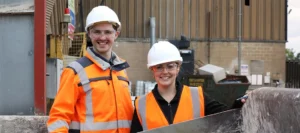Interview: Qatar and the climate crisis
 Qatar is amongst the most vulnerable countries to the climate crisis; it faces drastic water shortages, unlivable temperatures and ever-rising sea levels.
Qatar is amongst the most vulnerable countries to the climate crisis; it faces drastic water shortages, unlivable temperatures and ever-rising sea levels.
Environment Journal got in touch with Dr Marc Vermeersch, executive director of the Qatar Energy and Environment Research Institute (QEERI) in order to understand the severity of the problem and find out what the country is doing to try and mitigate the risks.
The QEERI was established in 2011 in a bid to address Qatar’s energy and water security challenges through research, innovation and technology development.
Countries in the Middle East and North Africa are already becoming increasingly arid, and unfortunately, the climate crisis and the political situation in Qatar has exacerbated the situation.
Water crisis
Qatar experiences extremely high levels of water stress due to the scarcity of natural renewable water resources.
The country’s arid desert climate has unpredictable rainfall, averaging between just 50 and 80 mm each year. At the same time, Qatar has one of the highest domestic water consumption rates in the world; with households consuming on average 430 litres of water per day.
Qatar’s main sources of freshwater are the ground level aquifers, however, increasing pressure on these resource means that water withdrawal far exceeds the recharge rates.
According to Dr Marc, the old-fashioned approach to understand how the aquifers are evolving was to drill down and measure the water.
‘This is a lengthy and painful approach,’ he explained.
‘Therefore we have teamed up with NASA to use an electromagnetic radar to scan the surface of the country and assess the development of the aquifers.
‘Thanks to this new approach, in a few hours we can scan the whole country and get a good idea of how the aquifers are changing.’
‘The political situation and the ongoing climate crisis means that food and water security are major concerns for the country of Qatar – so it is essential for us to understand exactly how the underground water is evolving.’
The water contained in these aquifers faces many threats, from the impact of farming to rising sea levels.
‘If you pump more water than can be recharged, then this water that has been there for thousands of years is not replenished.
‘The other threat, if you look at the country of Qatar is the presence of the seawater and the geology of the ground, Qatar is very porous and so as sea levels are rising, water is entering and contaminating the aquifers
‘This means that even the water coming from the aquifers has to be treated.’
Disrupting these aquifers also threatens the balance of the country, we tend to have a very static image of the ground, but the ongoing water crisis is actually changing the shape of the country.
Dr Marc explained: ‘Pumping water from the aquifers is threatening the countries infrastructure – if the ground is moving then this is a threat.
‘We try to educate people to save water and to be careful about water consumption but it is not easy because the country is dry – we don’t have many options, either pump the aquifers or take water from the sea.’
Warming temperatures
Qatar has recorded some of the hottest temperatures on record, with temperatures regularly exceeding 45 degrees Celcius.
‘In a few years temperatures will be so hot it will pose a threat to lives – this is the reality,’ said Dr Marc.
‘It is difficult to leverage the resources to tackle this threat. You have two approaches – risk mitigation or adaptation strategies.’
The QEERI advises the government on these issues, they work from different perspectives – environment research and economic impact and then help the government to implement policy and economic measures to mitigate risk.
The future
‘Globally if you look a the geopolitical landscape we are still very far from doing enough – the same can be said for Qatar.
‘Politicians keep speaking of the 1.5-degree target, but this misleading, the 1.5 target is over.’
According to Dr Marc, the most important thing to do is to adapt.
‘We need to do what we can to prevent the population from being exposed to the worst impacts of the climate crisis. We all see what is happening and at the end of the day we need to understand that everything is economically driven and not climate change driven – this needs to change or we may reach a point of no return, we have a big challenge ahead of us.’
Photo Credit – Pixabay
















this article was very helpful